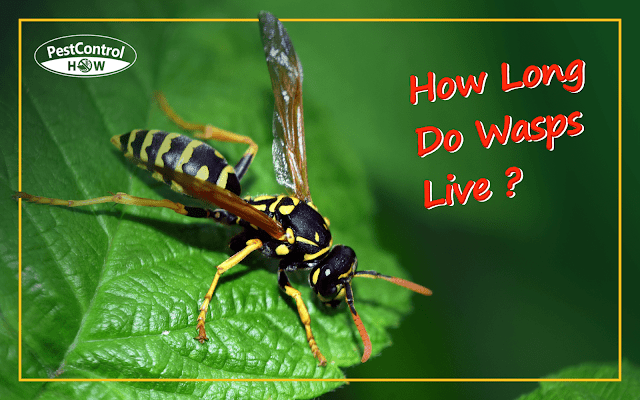While some say that wasps are dangerous and that you should flee when they roam around, you should also know that these insects are useful in nature and, therefore, for humans. There are over 6,000 wasps, but the yellow and black colored types are the most well-known. The latter live easily in society if the other species live more solitary. But whether they are solitary or social, their lifestyle is an effective weapon in combating insects.
Wasps can get rid of an incredible amount of bugs for free. However, you should also understand that if insects are necessary for nature, their proliferation can be a real disaster, especially when it is too important.
{tocify} $title={Table of Contents}
The wasp is an insect belonging to the Hymenoptera family except for the ant and the bee. You should know that all these flying insects are not part of social insects. Two pairs of membranous elytra characterize wasps. They also have a tube-shaped sting used for egg-laying. This tube can also be modified to inject the venom to kill the prey or protect against predators.
How long do wasps live
The lifespan of these flying insects depends on their function in the colony. The fertile female, for example, can live a whole year while the sterile or worker females only live a maximum of 22 days. As for the males, they are about six weeks old. These cannot sting. In addition, its stinger and its venom are part of the reproductive system of a female wasp, and This is why it is only the females that bite. But they only attack humans when defended.
The wasp queen
The queen wasp is fed by the workers. She eats fruits, rotten meat, and fish, as well as nectar, and she lays eggs until the end of summer. As for the workers, feed on sweet substances contained in the larvae, nectar of flowers, and fruit juice outside their nests. There are also predatory wasps that paralyze other insects to feed their larvae.
The development cycle of wasps
Unlike bees, ants, and termites, wasp societies are annuals. So, when spring arrives, a female fertilized the previous year called "the queen" creates a new society. To do this, she chooses an excellent place to build the first cells of the nest. Then, she lays the first eggs there and feeds the larvae after hatching.
After pupation, the larvae transform into sterile workers who build the nest and then supply the entire colony. As for the queen, she will only lay eggs. However, at the end of the summer, the hatched eggs will produce fertile male and female wasps for subsequent fertilization.
On the first day of the cold season, the nest will degrade, and the colony will disappear, except for the fertilized females who overwinter in a natural nest made from wood. These natural shelters come in various shapes and sizes and can accommodate thousands of insects. They are often found in tree trunks, fireplaces, attics, or even shutter formwork.
The insect bites
The wasp is known for its stinging character. All-female wasp species can sting while injecting its venom with their sting. These insects can use their sting several times, unlike bees which lose theirs after stinging. Wasps have smaller beards than bees, which allows them to remove their sting easily. Their bites are very painful and can even cause edema resulting in choking. In some cases, this causes severe allergic reactions, even fatal.
These critters can also sting pets, and these bites are just as painful and dangerous. Indeed, they also lead to degradation and pollution of food, disruption of their environment, and a phobia of proliferation.
Precautionary measures
Usually, the wasp is active during the middle of summer. This is when the colony grows stronger as the fertile females leave to meet males to mate. Thus, one should avoid walking barefoot during this period, especially on the grass and garden. When a wasp lands on us, it should not be chased away brutally, as it can become aggressive with this gesture. Instead, it is advisable to use a piece of paper or a newspaper to deport her elsewhere gently.
It is also important to check your glass of juice before drinking, as these insects are very attracted to sugary foods. Also, we have to close the trash cans and put them outside for emptying every day. The best way to get rid of these critters is to determine which routes they can take to reach their nests. The best is to find these entrees during the afternoon. During this period, the workers go out in search of food. Be careful, do not destroy the nest of these flying insects in the middle of the day; this can be dangerous, as there is a risk of repeatedly stung in the face, neck, and arm by workers. In the event of a bite, you should apply antihistamine creams immediately to the entire affected area. And if they are very serious, you should see a doctor.

